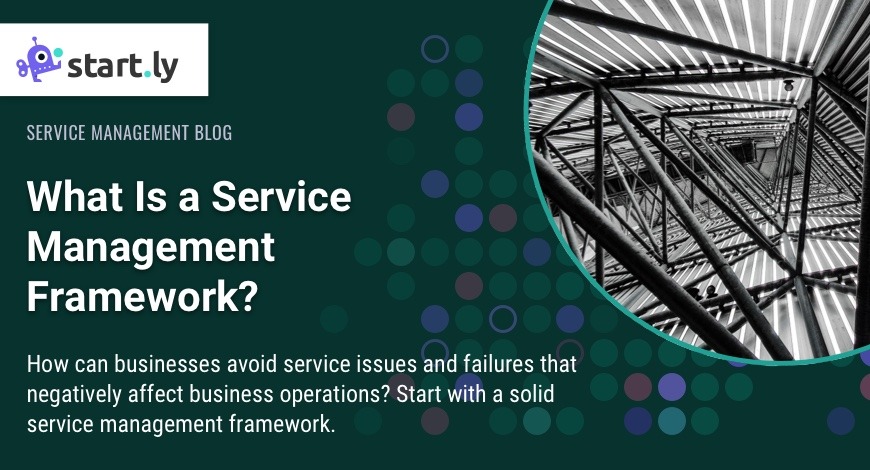Behind any good IT service management is a solid service management framework, which provides the guidelines and structure for managing and supporting IT services. Developing a deeper understanding of service management frameworks, the involved processes, and the importance of service management is a key step toward building a thriving business. By properly using IT service management, businesses stand to gain a devoted customer base and increased profit margins.
What Is the Importance of Service Management?
In a recent industry survey, 84% of respondents from organizations of all sizes stated they understood the adverse impact their service issues and failures have on business operations. Quality service management seeks to successfully avoid those adverse impacts while reducing the chances of those same issues occurring again. This boosts company image, productivity, and establishes businesses as reliable entities in a competitive market.
What Is Meant by IT Service Management Framework?
An IT service management framework is a customer-focused approach to providing information technology. When asking, “What is the main objective of service management?” the answer is to build strong business-customer relationships and deliver value through services. Service management does this by organizing IT-related tasks as well as the connections between customers and IT staff members within an underlying framework.
An IT service within a service management framework has general qualities that make it an IT service. This includes the ability to:
- Reinforce a customer’s business goals
- Satisfy one or more customer needs
- Be seen as a clear and/or consumable product
If you’re in the determination stages of what services you should offer, or which of your business’s offerings are services, it’s helpful to consider the following:
- Can a person buy or request it? If so, it’s most likely a service.
- If a service has an optional or supplemental component to it, classify that as part of that service instead of creating a whole new service category. This keeps the service management process more streamlined and orderly.
- A service refers to a business capability, not a specific type of technology.
- Do not confuse applications with services. An application is software that is installed and managed by users, while an IT service manages software or technology for users.
What Is the Service Management Process?
The process of service management is to take a business’s services and improve them to further meet customer needs and wants. To have a deeper understanding of the whole service management process, the IT Infrastructure Library (ITIL) is a well-respected framework for IT service management best practices.
What Is the Definition of Service Management in ITIL?
Service management in ITIL is described in lifecycle phases:
- Strategy – Define and strategize IT services, budget costs, forecast future demand, and consider any feedback.
- Design – Manage a service catalog, manage information security, monitor service capacities, and coordinate policy design.
- Transition – Test service impact before production, move new services into production, and measure performance.
- Operation – Resolve individual service issues, identify root causes of incidents, and direct and organize service requests.
- Continual Improvement – Analyze and utilize gathered data for implementing changes to improve customer experiences and meet changing needs.
These phases cover the development, preparation, release, and maintenance of IT service management. For real-world examples, service management might include:
- Asset Management – This is the process of making sure all assets are where they should be and being utilized to their full potential. All intangible and tangible assets should be tracked and accounted for at any point in time. Startly’s asset management also includes distributed asset scans, an asset inventory, software asset management (SAM) licensing, and more.
- Knowledge Bases – A knowledge base is a self-serve online library of information about a product, service, department, or topic. A business can provide a wide range of articles and resources to better serve customers through knowledge sharing, something easily accomplished with Startly’s integrated knowledge bases.
- Ticketing – Ticketing is essential for tracking customer incident and service requests. Our Startly ticketing system channels all ticking traffic to a single dashboard, simplifying ticket management and creating a seamless experience.
- Change Management – Rolling out changes to an IT infrastructure is complex and rife with opportunities for lost time and energy. A good IT change management will control risks and keep disruptions to services at a minimum. We run our Startly change management process through many different steps of planning, scheduling, risk analysis, implementation, and review.
With so many moving parts, involved personnel, and lifecycle stages, system management can quickly become a mess without proper processes in place. Fortunately, Startly can help.
Successful Service Management with Startly
Startly provides an all-in-one solution for common business practices, like service management. We were tired of jumping from place to place to successfully manage our customers, team, and projects, so we solved the problem by creating a central location for all of these processes. Most likely, your business deals with many of these tasks, such as:
- Time and Expenses
- Service Management
- Organizational Governance
- Analytics and Insights
If this is the case, Startly can provide you with a platform where these processes effectively coexist and even benefit one another. Contact us to learn about Startly’s ease of use, value for all members of an organization, and how it focuses on the most important aspect of your business: happy and loyal customers.

